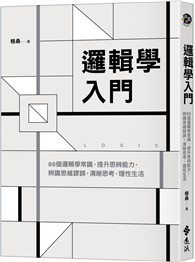Seib explores the many ways in which news coverage shapes the design and implementation of foreign policy. By influencing the political attitudes of opinion-shaping elites and the public at large, the news media can profoundly affect the conduct of foreign policy. Seib’s text analyzes important examples of press influence on foreign affairs: the news media’s definition of success and failure, as in reporting the 1968 Tet Offensive in Vietnam; how public impatience, fueled by news reports, can pressure presidents, as happened during the Iran hostage crisis of 1979-81; how presidents can anticipate and control news media coverage, as was done by the Bush administration during the 1991 Gulf War; how press revelation or suppression of secret information affects policy, as in the cases of the Bay of Pigs, the Cuban missile crisis, and various intelligence operations; how coverage of humanitarian crises affects public opinion; the challenges of live TV coverage; and the changing influence of news in the post-Cold War world. By covering a wide range of issues and examples, this important text will stimulate thoughtful appraisal of the relationships between the news media and those who make policy. It will be of interest to students and scholars in journalism, political communication, and international relations.
| FindBook |
有 1 項符合
Headline Diplomacy: How News Coverage Affects Foreign Policy的圖書 |
 |
Headline Diplomacy: How News Coverage Affects Foreign Policy 作者:Seib 出版社:Praeger 出版日期:1996-11-25 語言:英文 規格:平裝 / 208頁 / 22.9 x 15.5 x 1.5 cm / 普通級 |
| 圖書館借閱 |
| 國家圖書館 | 全國圖書書目資訊網 | 國立公共資訊圖書館 | 電子書服務平台 | MetaCat 跨館整合查詢 |
| 臺北市立圖書館 | 新北市立圖書館 | 基隆市公共圖書館 | 桃園市立圖書館 | 新竹縣公共圖書館 |
| 苗栗縣立圖書館 | 臺中市立圖書館 | 彰化縣公共圖書館 | 南投縣文化局 | 雲林縣公共圖書館 |
| 嘉義縣圖書館 | 臺南市立圖書館 | 高雄市立圖書館 | 屏東縣公共圖書館 | 宜蘭縣公共圖書館 |
| 花蓮縣文化局 | 臺東縣文化處 |
|
|
圖書介紹 - 資料來源:博客來 評分:
圖書名稱:Headline Diplomacy: How News Coverage Affects Foreign Policy
內容簡介
作者簡介
PHILIP SEIB is Professor of Journalism at Southern Methodist University. He is also a columnist for the Dallas Morning News and a political analyst for WFAA Television, Dallas’s ABC affiliate. He is the author of nine books, including Campaigns and Conscience: The Ethics of Political Journalism (Praeger, 1994).
|











